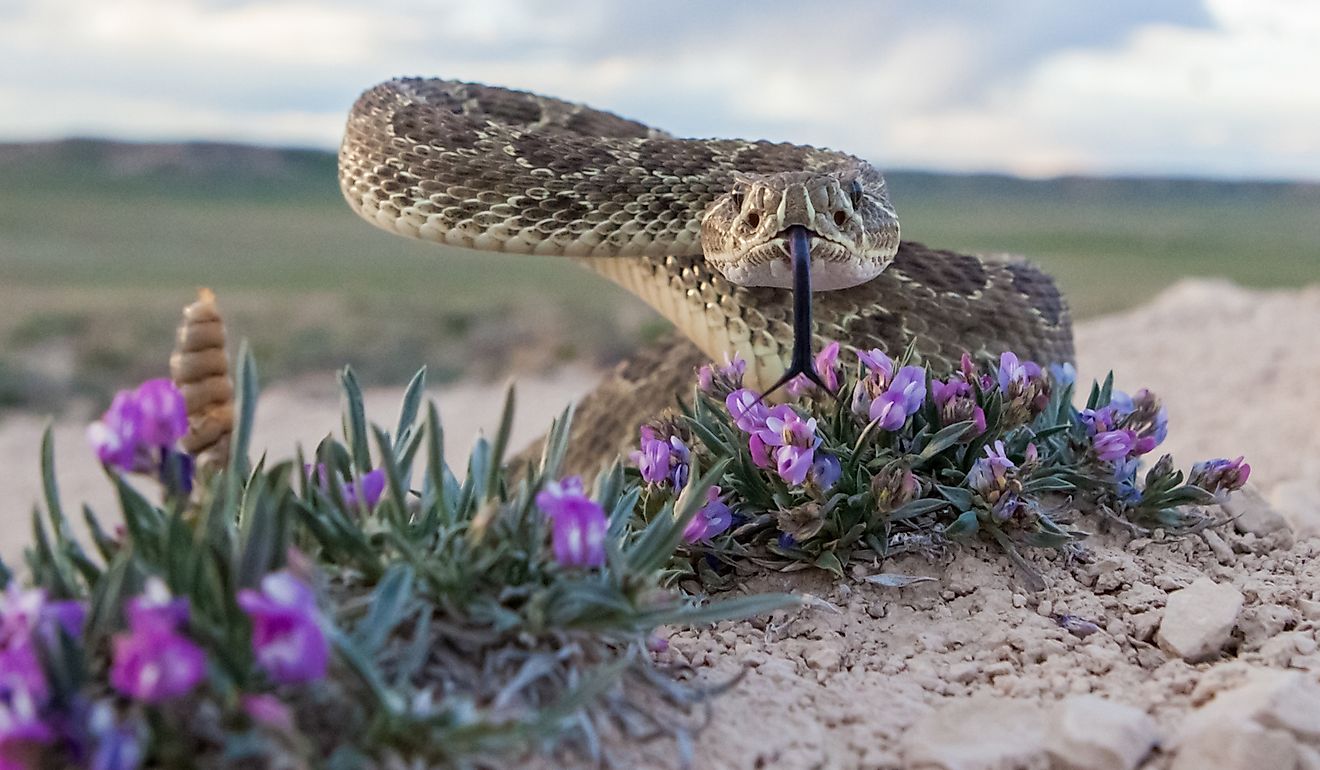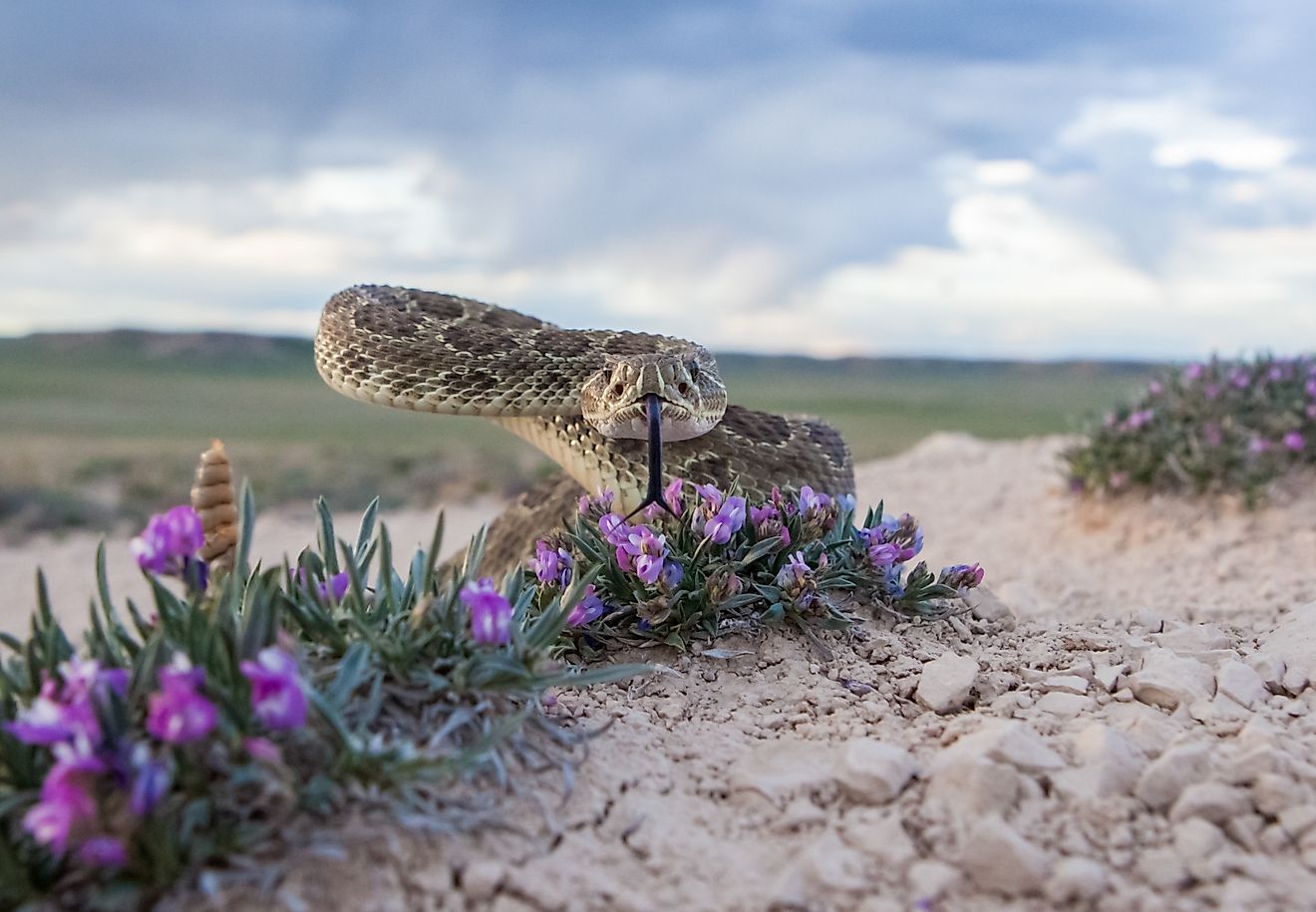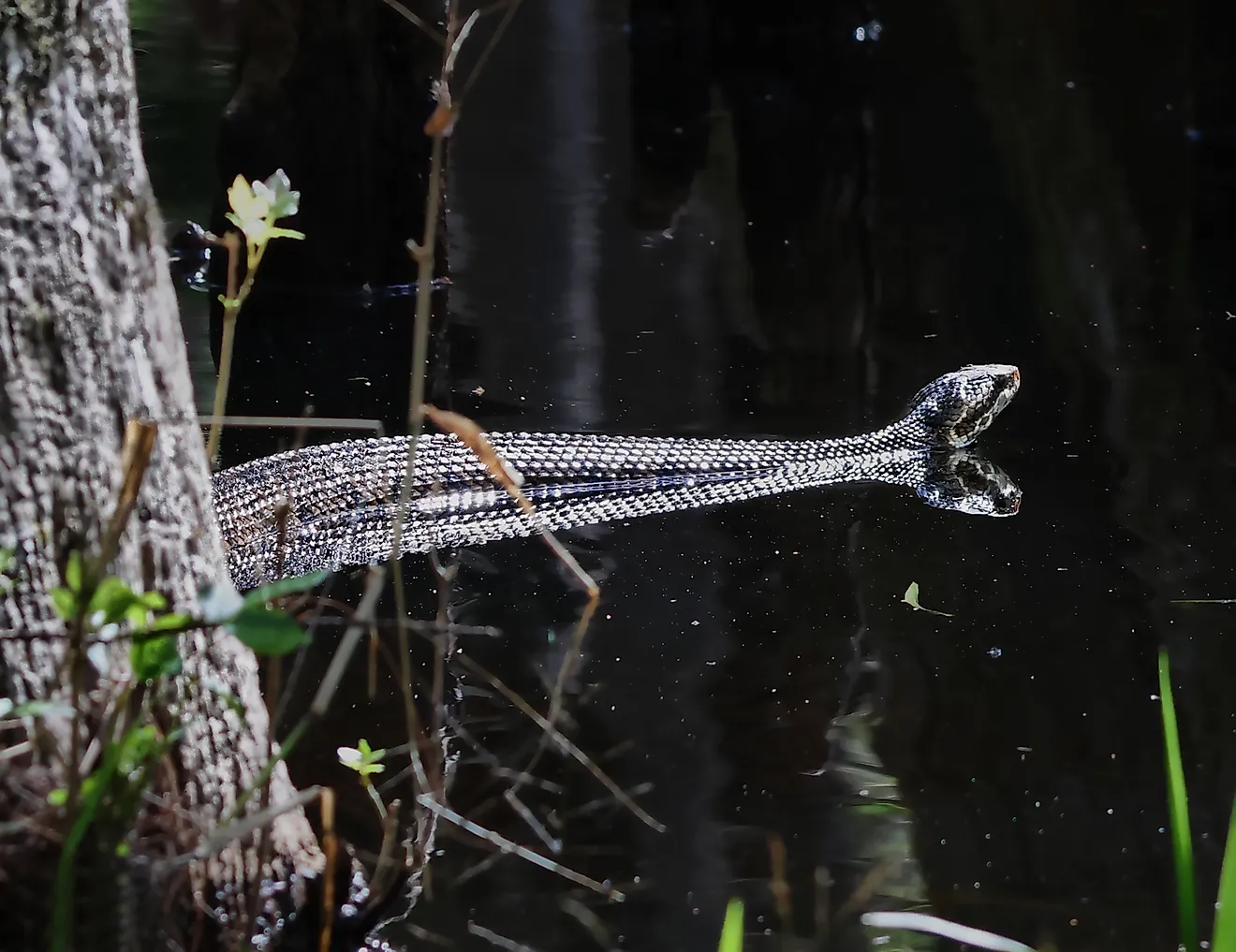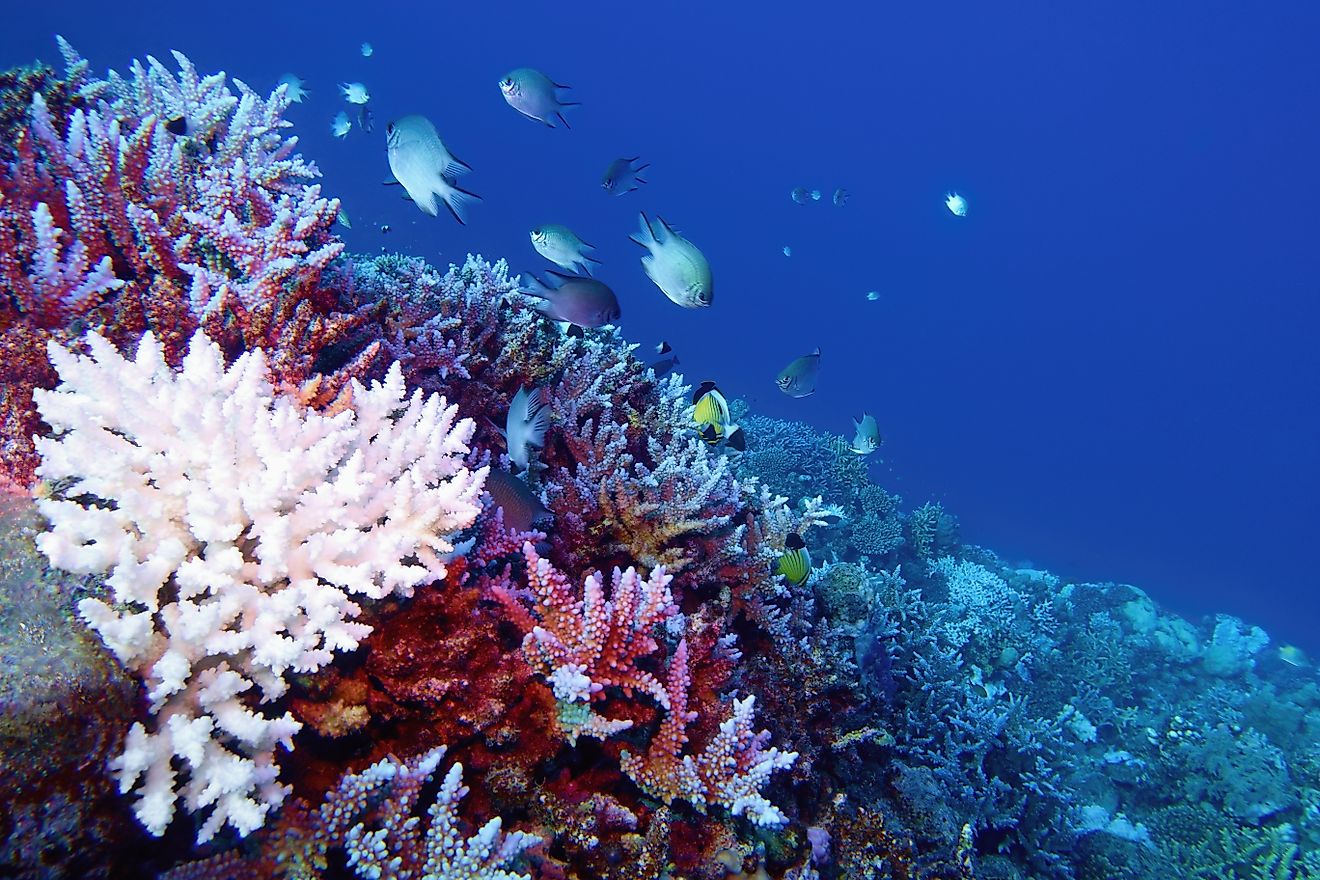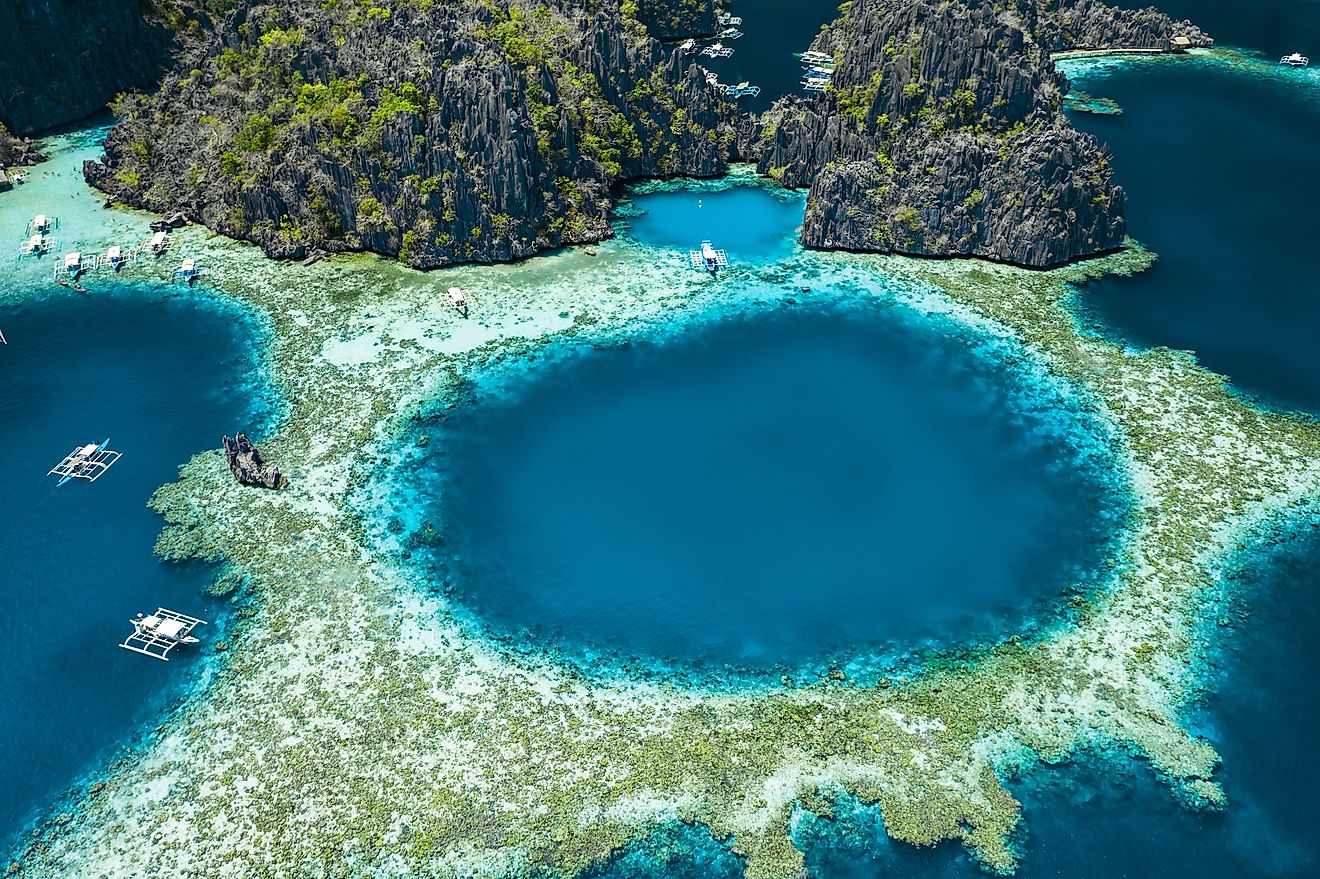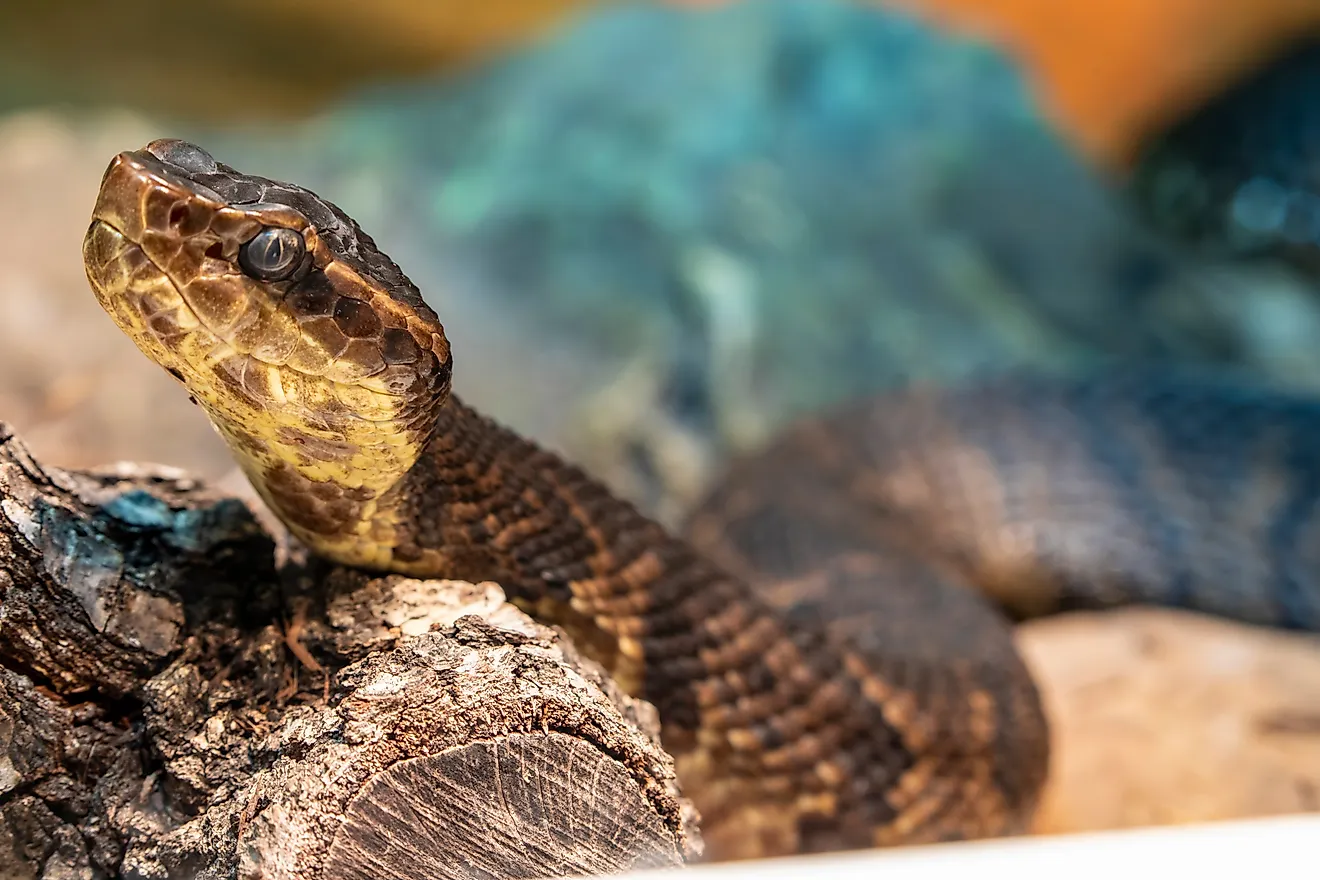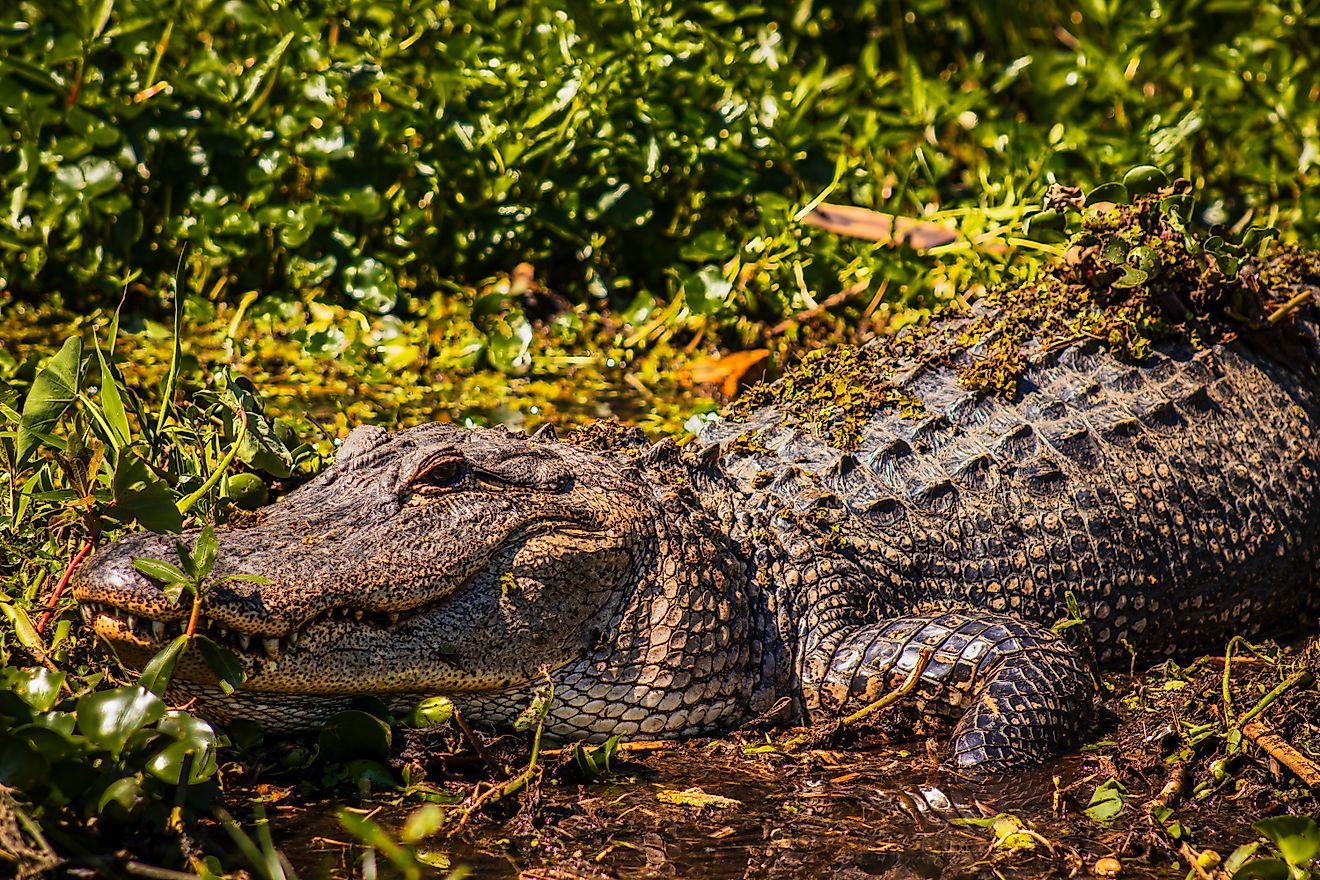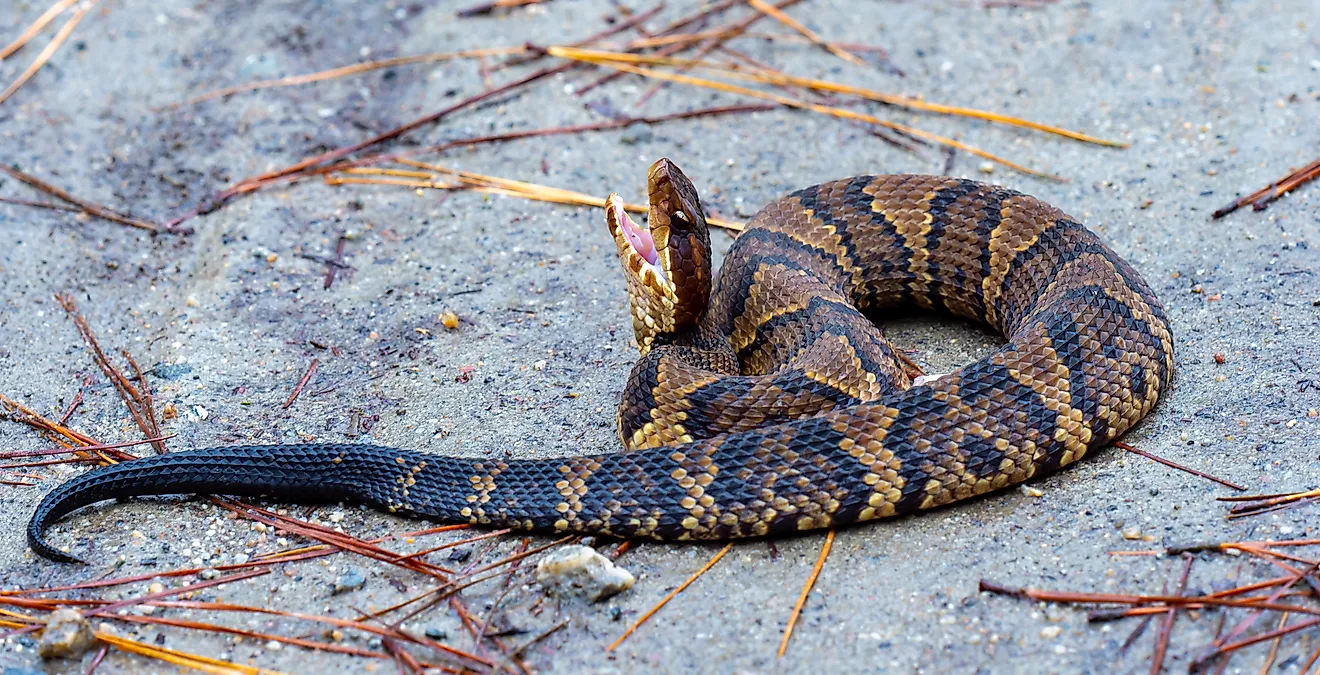
5 Most Snake-Filled Bodies Of Water In The United States
One of the best things to do on vacation is take to the water. Whether you are going for a swim, planning a paddle, hiking the shoreline, or taking a boat out, it is important to be aware that you are not the only one enjoying the water. Across the United States, many popular lakes, rivers, and reservoirs are beautiful vacation spots and rich in ecological diversity, including a surprising variety of snakes.
These American bodies of water are home to many different snake species, from aquatic to nonaquatic and venomous to harmless. The United States alone hosts around a dozen species of water snakes, and while most are nonaggressive and shy, it pays to be prepared. Snakes are typically reclusive and will avoid interaction with humans where possible, so your chances of encountering them on vacation are low but not zero. Read on to discover which U.S. watering holes attract the most snakes and what to watch for if you are planning a visit.
Lake Tahoe
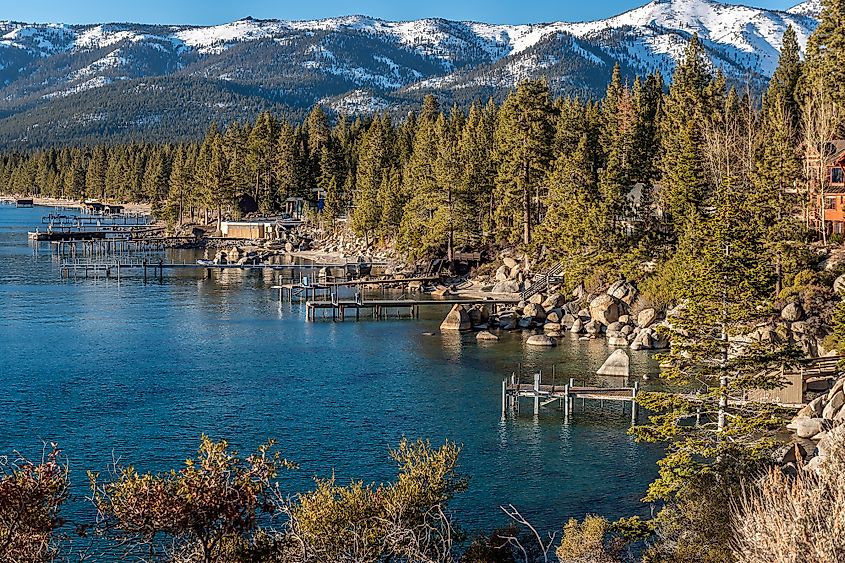
Lake Tahoe, on the California-Nevada border, is North America’s largest alpine lake and one of the largest freshwater lakes in the world. With a surface area of 191 square miles and 72 miles of shoreline, there is lots of room for wildlife among its turquoise waters and wooded banks. Visitors come year-round to hike the scenic trails, kayak across the lake, or relax at one of the region’s many beaches, such as Sand Harbor and Pope Beach.
If you spot a snake at Lake Tahoe, it is most likely to be one of three species: the Great Basin rattlesnake, the common garter snake, or the northern rubber boa. The Great Basin rattlesnake is the only venomous species in the area, usually found in rocky, dry terrain. It has a distinctive rattle and a broad triangular head, and while its venom can be dangerous, these snakes prefer to avoid humans. They typically give a warning rattle before striking and will only bite when threatened.
Rattlesnake populations are increasing around the lake, so if you are hiking any rocky areas, look carefully under logs and rocks and do not reach into any hidden nooks or crevices where they might curl up. With the proper precautions, you can enjoy Lake Tahoe’s mix of recreation and natural beauty with peace of mind.
Mississippi River
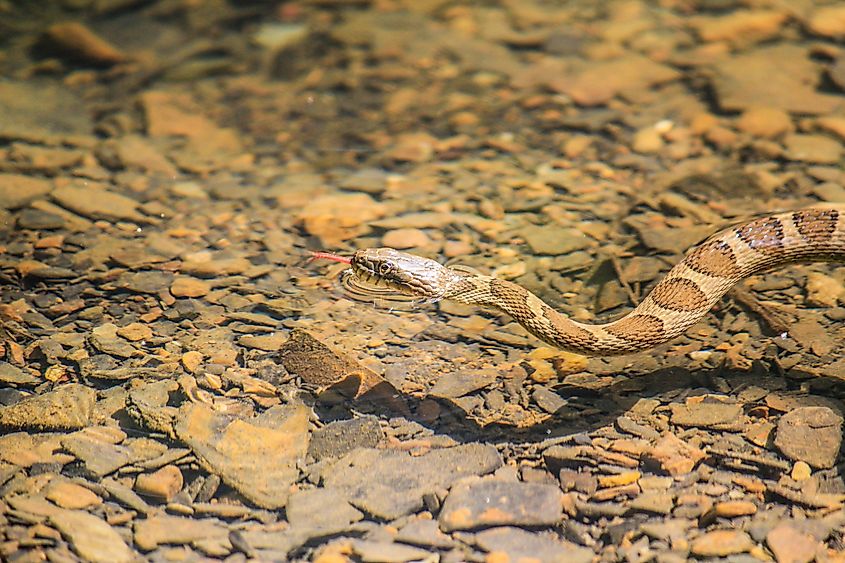
Running 2,300 miles from Lake Itasca to the Gulf of Mexico (America), the Mississippi River is North America’s second-longest waterway. Winding through several different states on its journey from north to south, the river contains many different ecosystems, including the marshy habitats, wet meadows, and swamps that many snake species favor.
Northern watersnakes, bullsnakes, eastern milksnakes, and northern redbelly snakes are just some of the snakes you can encounter near the Mississippi River. The ones to watch out for however are the river’s venomous species which include the eastern copperhead, the northern cottonmouth, and the timber rattlesnake. Be careful walking the paths around the shoreline, especially in spring and fall when snakes are more active. If you do see a snake, slowly move away from it and never attempt to move or disturb it.
Stay alert even if the snake appears to be dead — the plains hognose snake, which is also found in the Mississippi River, plays dead when feeling threatened, so it may not be as lifeless as it appears.
Lake Mead
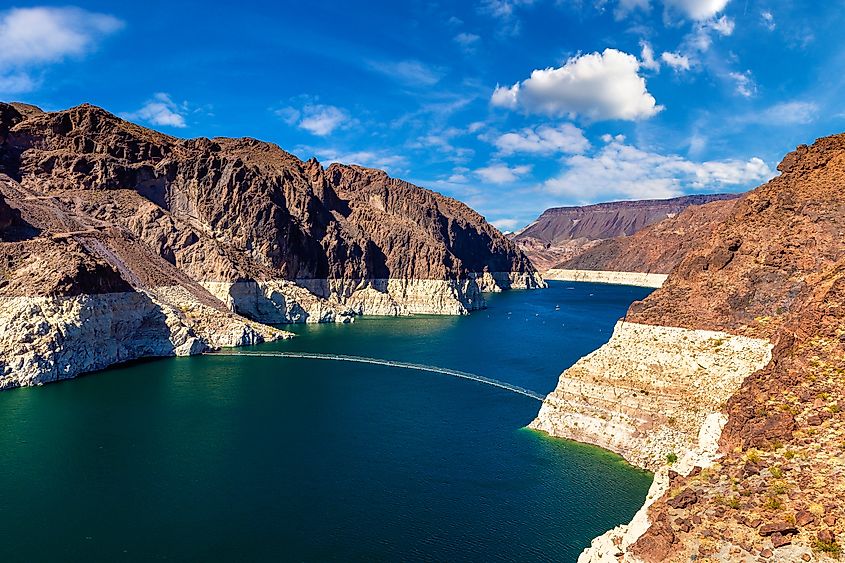
Lake Mead, on the Arizona-Nevada border, is one of the largest man-made reservoirs in the world. Formed by the Hoover Dam, it covers around 250 square miles and has 750 miles of shoreline. It is a favorite destination for water-based recreation, drawing millions of visitors each year for boating, fishing, swimming, jet skiing, and camping along the desert shoreline. Trails around the lake also attract hikers eager to explore the rugged terrain and striking views.
There are 41 reptile species within the Lake Mead National Recreation Area. These include four different rattlesnake species and king snakes, which are non-venomous. The desert climate, rocky slopes, and boulder-strewn landscapes around Lake Mead make it an ideal habitat for snakes. Once the temperature drops, they hibernate, staying hidden away from November to February. Most are most active in April and May when feeding and mating, but go dormant again in the blistering heat of summer. You can identify a rattlesnake from the tell-tale rattle on its tail and its triangular-shaped head, which is common to all pit vipers. Meanwhile, king snakes are very noticeable due to the distinctive black and white stripes across their long, thick bodies.
Lake Seminole
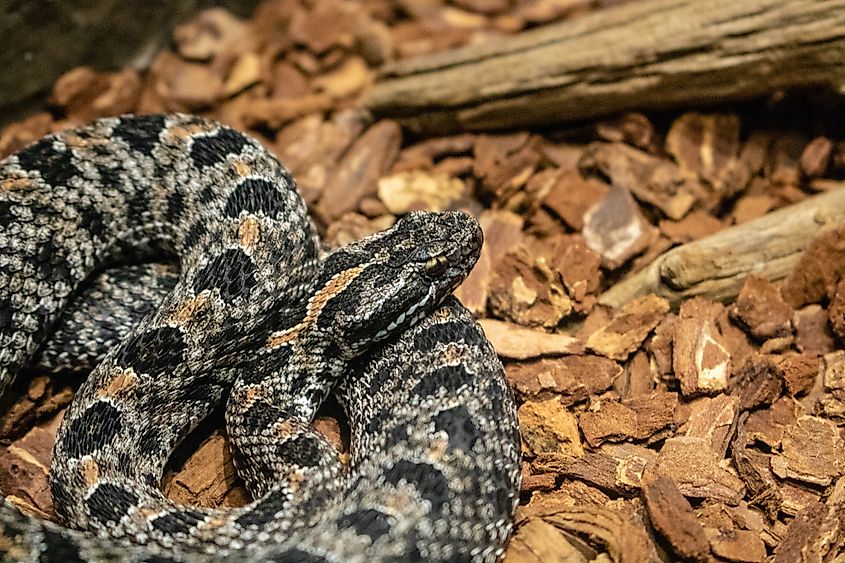
Located where Florida, Georgia, and Alabama (nearby) meet, Lake Seminole is a 37,500-acre freshwater reservoir home to several snake species. Around 80% of the lake is in Georgia, where it forms the centerpiece of Seminole State Park. The park is open to campers, hikers, anglers, and boaters. It’s also a popular place to go birdwatching and see other wildlife.
There are a few venomous snakes to watch out for around the Lake Seminole area, including the cottonmouth snake, also known as a water moccasin, the pygmy rattlesnake, and the eastern diamondback rattlesnake. The cottonmouth is particularly at home in wet, swampy environments and is known for swimming with its head above water. It is recognizable by its thick body, dark coloration, and the bright white interior of its mouth, which it displays as a warning.
Missouri River
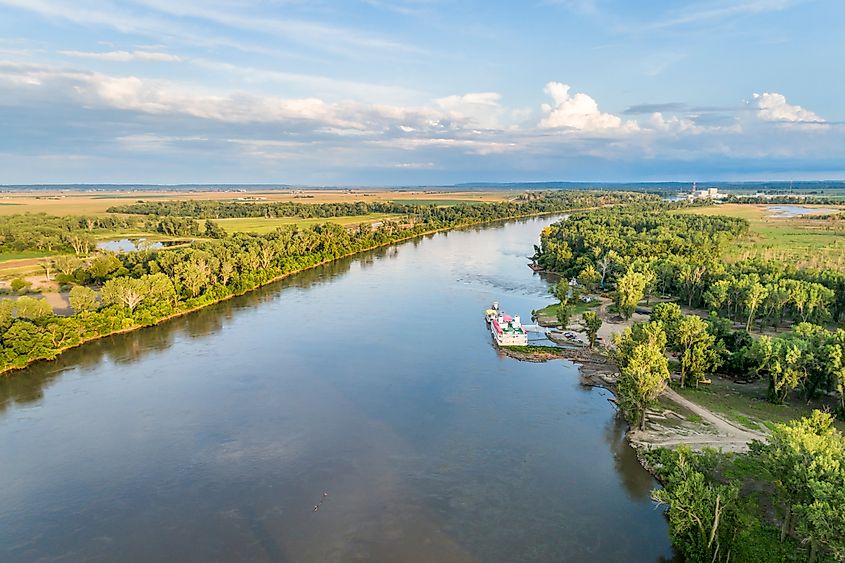
North America’s longest river, the Missouri River, runs 2,341 miles from the Rocky Mountains in the north to the Mississippi. Along its course, it flows through varied terrain, including plains, forests, and rolling hills, making it a diverse ecological corridor. Along its banks, it provides drinking water, transportation, and recreational opportunities for many communities.
There are 12 different snake species recorded in habitats around the Missouri National Recreational River, including hog-nosed snakes, racer snakes, northern water snakes, garter snakes, milk snakes, and redbelly snakes. There are only two venomous snakes found in the Missouri River recreation area, the timber rattlesnake and the northern copperhead. The former is easily identifiable by its rattling tail; you can spot the latter thanks to its thick, copper-colored body that’s striped with hourglass-shaped bands.
Be Snake Smart
On the rare chance you see a snake in the wild, the best course of action is to leave it alone. Stay out of striking distance, back away slowly, then move around it. If you’re in a recreation area, you may want to alert park rangers. You should always keep pets on a leash and keep to the paths. Every year, around 8,000 Americans are bitten by venomous snakes. If you’re one of the unlucky few, keep calm and seek medical attention right away. Do not apply ice to the area, try to suck out the venom, or make a tourniquet as these can actually worsen symptoms.
Their incredible ecosystems are part of what makes America’s stunning alpine lakes, crystal-clear reservoirs, and mighty rivers so special. Don’t let snakes keep you out of the water this summer. With a few common-sense precautions, you can enjoy the country’s beautiful waters right alongside its diverse wildlife.
